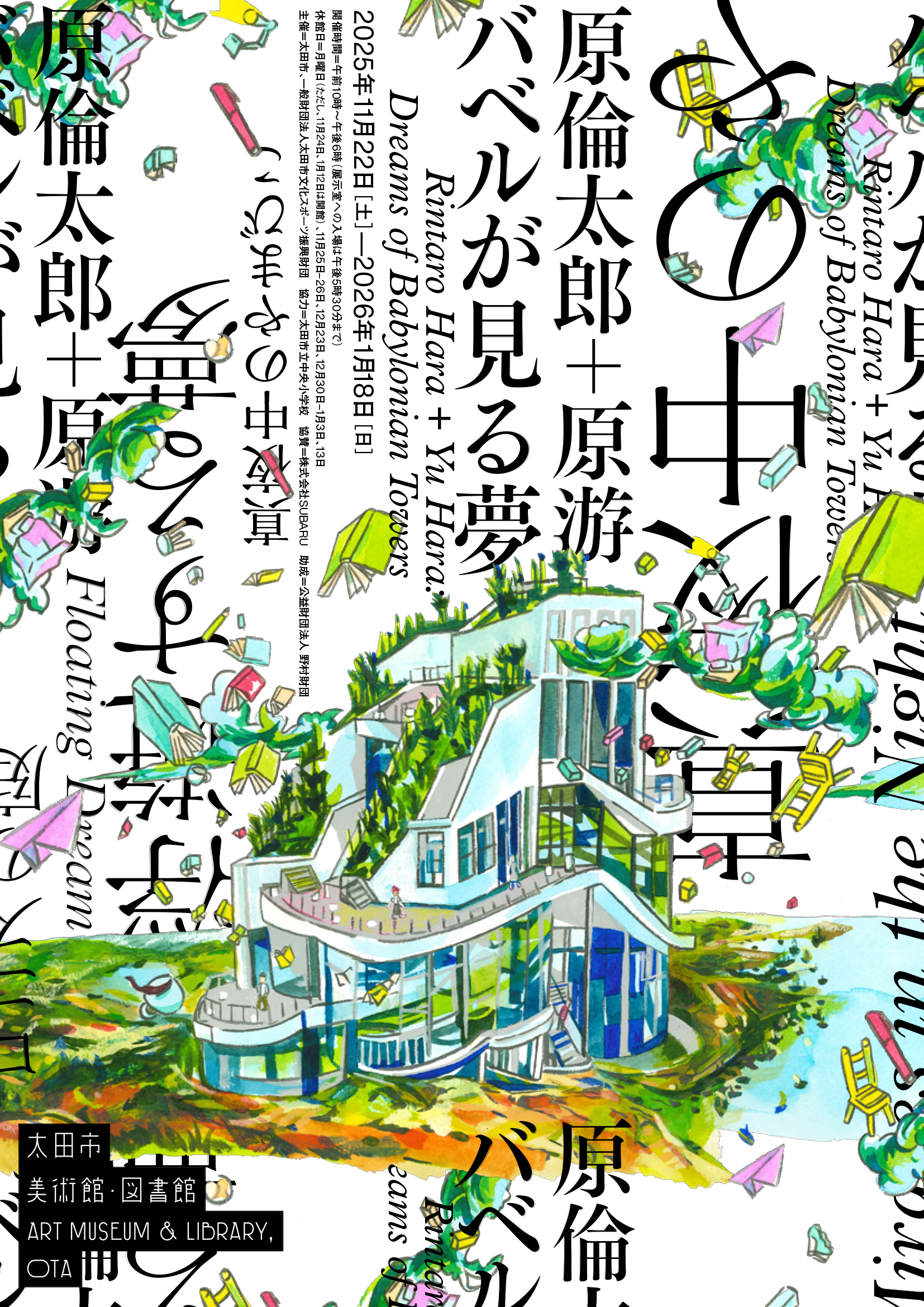Rintaro Hara + Yu Hara: Dreams of Babylonian Towers
November 22, (Sat), 2025 – January 18 (Sun), 2026

Rintaro and Yu Hara likened the helical structure of the building of the Art Museum & Library, Ota,
to that of the Tower of Babel, and imagined its interior accordingly.
You will meet those together with the works of collaborative project with the Ota Chuo Elementary School.
INFORMATION
Event Name: Rintaro Hara + Yu Hara: Dreams of Babylonian Towers
Venue: Art Museum and Library, Ota
Period: Saturday, November 22, 2025 – Sunday, January 18, 2026
Open: 10:00 am – 6:00 pm (Entrance to the exhibition room closes at 5:30 pm)
Closed: Mondays (except November 24, January 12), November 25–26, December 23, December 30–January 3, January 13
Admission Fee:500 (*400 yen)
*For group of 20 people or over, ART MUSEUM & LIBRARY, OTA card holders, or Furatto Ryomo Tobu Free Pass holders.
Free for high school students or younger, the age 65 or over, disability certificate holders and their one attendant.
Free for families with children age of 15 or under on “Ota family day” (December 7, January 4 )
Organizer: Ota City, Ota city Culture & Sports Promotion Foundation
Sponsor: SUBARU CORPORATION
Support: NOMURA FOUNDATION
Outline
You have probably heard about or read the story of the “Tower of Babel” in the Book of Genesis. According to the tale, there once was a time when all humans spoke the same language, and at some point they came together to build a tower that would reach up to the sky. Worried about those ambitions down on earth, the gods decided to confound the humans’ speech so that they could no longer understand each other, as a result of which the tower was never completed. Once deprived of their unified language, humans had to start again from zero, and eventually built the multilingual world as it exists today. In that sense, the story of the “Tower of Babel” suggests at once an end and a new beginning. When thinking of the tower, you might imagine it as depicted in the famous painting by the 16th century painter Pieter Bruegel the Elder.
Rintaro and Yu Hara likened the helical structure of the building of the Art Museum & Library, Ota, to that of the Tower of Babel, and imagined its interior accordingly. On each of the multiple levels of surreal-looking spaces that they walk through, visitors get to encounter artworks not only by standing in front of them. Here, such “actions” as walking, climbing, lying sprawled on beds or loungers, building or knocking over stacks, are essential aspects of an experience that is not unlike that of children familiarizing with new sensations through the act of playing.
The program further includes a workshop realized in cooperation with the Ota Chuo Elementary School, aiming to introduce the activities of the Art Museum & Library to a broader audience across the region, and attract younger generations and inspire their interest in art. In the workshop, 5th-grade students create “paintings with ears” as previously proposed and made by Yu Hara. On their way walking up the museum’s floors, visitors can view these children’s paintings displayed on the walls.
As an object that contains notions of both beginning and end, the Tower of Babel seems to be the very embodiment of human creative activity. Come and dive into the constant flow of creativity in the form of artworks by Rintaro and Yu Hara, and the children of Ota.
